-
Posts
28 -
Joined
-
Last visited
Content Type
Forums
Profiles
Gallery
Blogs
Downloads
Events
Posts posted by garcenw
-
-
I took a pic today to better describe my concern. In the picture below, which is with the stock setup, I took my boot and placed it on the peg with the shift pad of the boot just under the shift lever rubber. There is a slight upward torque on the boot to ensure it is snug against the shift lever. If you zoom in on the scale in the pic, you can see there is approximately 7/8" between the top of the tang and the sole of the boot. Now if you lower the peg 1-3/8" as Knight Design claims and you lower the shift lever a similar amount, it stands to reason that your boot can hit the side stand tang. Now I realize that you may not necessarily lower the shift lever the same amount as the pegs, but tang contact with the boot still seems possible, perhaps likely. What my picture does not capture is what actually happens dynamically, i.e. in actual usage. It is possible one's foot isn't that far inboard when shifting. If contact does occur there are things you can do, such as bend the tang, trim the tang, or add a spacer to the stand's stowed position travel stop, but I'm just wondering what the actual users are experiencing in regards to this.
-
MaxSwell,
With the pegs lowered, I would naturally rotate the shift lever on the spline to lower it and this was part of my concern, i.e. my foot would be lower both front and rear when upshifting. Obviously, if needed, I can add a spacer to the portion of the side stand the travel stop hits as long as cornering clearance isn't compromised. I'm just wondering if the tang interfering with ones foot has been an issue for those using the KD pegs.
You mentioned lowering blocks, but the pic above doesn't have the blocks. It instead has the KD pegs. Did you mean the 2000 you used to own had KD pegs and you noticed no interference with the tang?
-
The space above the fill line is called vapor space. It is there to allow for thermal expansion of fuel when the temperature of the fuel gets above the fuel's temperature when it was stored in your gas station's underground tanks. The vapor space is designed to test your patience, but with enough persistence you can fill the tank to the point where you cover the vent. Most of the time, nothing happens when you do this as you will immediately start consuming fuel upon leaving the gas station. But say you live really close to your gas station (e.g. on the same block) and parked your bike at home in the sun on a hot day right after filling: you might see some fuel leak out of the tank vent. Fuel on the ground adds risk, so manufacturers add vapor space to mitigate that risk.
If you want to fill per Honda's design intent, fill to the bottom of the fuel inlet. I'm not familiar with the 6th gen, but it should have a conical opening where the rubber gasket seals against. Fill to the bottom of that when storing the bike. When immediately riding for some time after filling, you can fill her to the brim.
-
I'm contemplating ordering the Knight Design lowering pegs for my 1998 VFR800. For those that have tried the KD lowering pegs on their 1998 - 2001 VFR800, I have a question:
Is there an issue with kickstand tang clearance when you reach your foot under the shift lever to upshift? I ask, because, visually, it seems like the area of the foot under the arch may hit the tang when you reach under the shift lever. By "tang", I mean the protrusion you use to deploy the side stand.
Thanks.
- Walt -
I finally got around to doing the work to check/replace my thermostat in my 1998 VFR800. Removing the throttle body assembly required lots of lube and lots of mechanical persuasion. The thermostat was failed open (about 1/4" at room temperature). I tested the new thermostat prior to installing to make sure it worked per the spec and it did (it opened in the mid to high 170's F). With the new thermostat, it warms up a lot faster. I went out Sunday night and maintained 70 mph on US50 between Bowie, MD and Annapolis, MD. Ambient temperature was 39F. My dash gauge varied between 168F and 169 F when I held the aforementioned steady state speed, so I'm matching what "MadScientist" and "MaxSwell" reported. I guess the bypass hose to the radiator is just enough flow to allow some measurable cooling to take place which is why the gauge temperature is less than thermostat temperature (assuming the dash gauge is somewhat accurate).
-
 1
1
-
-
KevCarver,
Did you happen to test the old and new thermostats in a pot of hot water before installing the new thermostat?
-
I lived in Roseau for 4 years when I was an engineer for Polaris. It seems that northern MN has more than their fair share of hooved forest rats.
-
 1
1
-
-
The lower left cowl I ordered arrived yesterday. I haven’t had a chance to do a color comparison in bright sunlight, but I did a color comparison last night in the dark with an LED flashlight and this afternoon in very overcast conditions. The paint match was very good under those conditions. The real difference is in “patina”. The old paint on the bike has fine swirl marks from I guess washing and the new one is pearly smooth. You could tell which plastic was new and which plastic wasn’t.
The VFR decal was on the fairing as were foam parts 5, 6, and 7 (see pic below). Part 19 was not on the fairing. Part 19 doesn't even show up in the parts list on the various websites I checked - it just shows up in the fiche picture.
I was not impressed with Bike Bandit’s packaging. The box was soft without support and had buckled at various points. The leading front corner of the cowl was poking thru a tear in the box, but still covered by the bag it shipped in. About a 1 mm x 10 mm section of paint got scraped off. It isn’t really an issue as that is the tab that goes into the nose piece. The lowest trailing corner of the fairing (what would be by the kickstand) had paint got worn off, but were talking about 1 mm x 1mm area that you can’t easily see. I suspect that got rubbed off in shipping as that corner was pushing up against the inside wall of the box as there was no foam packing to brace the fairing in the box. All they used was brown paper stuffed haphazardly in the box. As soft as the box was, I’m surprised the cowl didn’t arrived cracked. I checked the part over very carefully and found no cracks. I suggest anyone ordering plastic body parts do the same. Other than that, I’m happy. -
If I recall a new washer isn't called for in the factory maintenance manual, but the part number is 90463-ML7-000.
-
I did a similar idle test, but this time, I put the thermocouple in the center of the oil cooler. Ambient temperature on the dash gauge was 82 F, while my thermocouple indicted 84 F. Let's call it 83 F. My results are plotted below. As you can see, at least while idling from a cold start, oil cooler temperature asymptotically approaches water temperature and the oil is slower to warm up than the coolant. I'm not sure if this would be the case while running on the road. I was expecting warmer temperatures in the oil with all the fluid shearing going on. The up and down cycling of the coolant temperatures after ~800 seconds is due to the fan cycling on and off.
-
 1
1
-
-
KevCarver,
Sorry, I should clarify what is meant by "steady state" for the non-engineers here. The temperature indicated was steady state which means I was running long enough and in relatively stable conditions so that the temperature leveled off. In the particular run you asked about, I did about 20 minutes of city driving before hitting a flat and non-curved section of limited access highway. Temperatures got as high as 206 F (briefly) in that city driving. Once on the highway, I maintained about an indicated 65 mph (true speed would be a bit less) until the temperature leveled off at 165 F (bouncing back and forth between 165 and 166, but spending more time at 165). I repeated the test going the opposite direction on said highway on my way back and temperature also leveled off at 165 F.
-
RVFR,
Folks get worked up over the temps over 200 F, but I don't see those as an issue, unless the temps get past the warning temp level on the gauge. Most cars run around 195 to 210 with nominal loads. I wouldn't worry much about temps in the 200 - 235 F range.
My concern is on the low end of the temperature scale once warmed up. Are steady state temps below thermostat temps normal? Normally not, but unlike some other vehicles, the VFR800 bypass goes to the radiator. That bypass is not insignificant in size, so there is the potential the some heat dissipation always occurs at the radiators even when the thermostat is closed. I'm trying to establish what are the normal steady state temperatures are on cool days before I decide to pull my thermostat out and test it. The temperatures I'm seeing (a little below thermostat opening temperature) are in the gray area if one assumes the bypass allows some cooling to occur and also accounts for the acceptable error in the head temperature sensor (which is a thermistor).
- Walt
-
 1
1
-
-
sfdownhill, KevCarver,
Mathematical symmetry can be a tricky subject.
- Walt
-
1 hour ago, sfdownhill said:
Walt, your two steady speed coolant temp readings seem very good. I just finished a ride on my primary 2001 from SoCal to Seattle, Montana, Idaho, Wyoming, Colorado, Arizona, and back. Ambient temps were between 51F and 213F. After warming up, my coolant temp was always between 170-180F, except in stop and go traffic on mountain switchbacks where it went up to 222F, then the fan brought it back down to 210F, where it stabilized. In 213F ambient, the coolant temp stayed 209-212F while cruising steady at 75-80mph.
There's another 2001 in my life with only 9500 miles on its odometer that has me worried - this past mid June I picked it up with 8112 miles on the odometer in Austin TX, and in traffic around Austin [101F ambient, high humidity] coolant never went below 220F and was 225-229 most of the time. On the way back to CA, even at 75F ambient and 75mph, coolant was still 210-213F. In 111F ambient and a steady 80mph, coolant temp was 225-233F. The coolant temp was always stable, it never jumped up or spiked. The previous owner purchased the motorcycle with 3500 miles on it and says it has always run on the hot side. The first factors to address are [1] the previous owner used a thermostat listed for a Mustang automobile from an auto parts store, and [2] the cooling fan has been flipped over in an attempt to draw cool air from outside the bodywork across the left radiator. My first actions will be to return the entire cooling system to OEM specs and have the radiators tested for flow/blockage. I'll post the process and results in a thread.
sfdownhill,
I don't know the spec for the Mustang, but car thermostats typically open in the 190 F to 205 F range. The thermostat is likely working fine, it's just the wrong thermostat. The thermostat is the killer because of all the hassle to get to it. You can change the thermostat and correct the fan first. BTW, turning the fan 180 degrees doesn't change the blade pitch direction and thus the flow direction is the same. All it does is reduce fan efficiency. The motor polarity musts be reversed to change flow direction. Those two changes will, more than likely, fix your elevated temperatures. If not, then you can get the radiators flushed.
- Walt
-
Damn, 213F!? It gets hot in Arizona. 🤣
-
 1
1
-
-
My temperatures might seem OK, but what I haven't done is rigorous observations with ambient temperatures in the 50's , 40's, or 30's. It is rare here in DC in July/August, but I might see mid 50's in the evenings if I'm lucky and we get an unseasonably cool day. 40's will have to wait for the fall and 30's perhaps December. In these cooler temperatures, I suspect I will see cooler dash gauge temperatures. I don't want temperatures to get so low that condensation can settle or that parts don't reach there design intended sizes due to thermal expansion. The other piece of evidence I have is that I don't get the sudden warmup of the right radiator once the gauge temperature approaches nominal thermostat opening temperature. My right radiator starts warming up roughly instep with the dash gauge readout. I collected some data on that.
My procedure:
1) Insert type T thermocouple in the center of right radiator. Thermocouple is touching it's nearest cooling channel. While this wont give you exactly the coolant temperature, it will be close, as the thermal resistance across the metal of the cooling channel is low and the channel to coolant thermal resistance is relatively low. In radiators, the big major thermal resistance is on the radiator-to-air side. In addition, I'm not so concerned with the exact coolant temperature. I'm more interested in the temporal thermal response of the radiator.
2) Thermocouple was connected to my multimeter which has a built in T-type thermocouple voltage to temperature converter.
3) Bike was at ambient temperature when started and I let it idle in my driveway. At periodic intervals, I noted elapsed time, dash gauge temperature, and radiator temperature. Note, at time = 0, my dash coolant temperature gauge obviously didn't give me a temperature (ambient was 80 - 81 F) as it doesn't read until the coolant hits 97 deg F. For that data point, I used the ambient temperature as the bike had been sitting for some time.
Below is a pic showing thermocouple placement. The data is shown in tabular form and is also plotted. As you can see, my radiator temperature increases roughly in step with the dash gauge. The radiator reads a little warmer than the dash gauge. That could be temperature sensor/thermocouple error, heat coming off the headers, or a combination of both.
-
 1
1
-
-
-
Terry,
How old is your thermostat?
- Walt
-
Maxswell,
I normally see temps in the 200 - 210 F range in DC summer stop and go traffic. If I sit stationary for any great amount in time in DC summer traffic, my fan will come on at temperatures slightly above that and I ahven't seen anything as warm as 230 F. I think the highest I've ever seen was 226 F and that was idling in my driveway. I'm more concerned on the low end as mid 160's F seems a little low for steady state cruising at any temperature. I'm trying to determine what is normal for this bike before digging in to do a thermostat replacement.
Are your low end readings (i.e. 165 - 181 F) taken with a recently replaced thermostat?
- Walt
-
I’m likely beating a dead horse here, but I can’t find a true consensus on older postings. On cool days, say 75 F (22 C) or less, what does your 5th gen VFR coolant temperature gauge settle at once you reach steady cruising on the highway or interstate? With the temperature sensor in the front head, one would expect something a little above thermostat opening temperature. The issue is that our VFRs have the bypass circuit in the thermostat housing that always allows some flow to the radiators irrespective of thermostat state. That flow path deosn't seem insignificant in diameter. It’s hard to know how much cooling that accomplishes without applying some engineering rigor. I figure the best way is to ask the members what they are seeing.
Probably the most useful responses would be those stating ambient temperature along with coolant temperature at that ambient temperature once you reach steady state while cruzing. Given the high failure rate of our thermostats, the highest confidence responses will be from those who recently replaced (say in the last few years?) their thermostats.I haven’t replaced my thermostat since I’ve purchased the bike (this March) and being the third owner, I don’t know the history of what has occurred regarding thermostat replacement. I suspect I’m in that grey area temperature-wise and suspect mine isn’t stuck, but doesn’t fully close (it reaches approximate thermostat temperature in ~3.5 miles of low traffic conditions on warm, say 80+ degree, days). Here are my steady state observations:Steady speed = ~45 mph, ambient temperature = 88 degrees F -> temperature gauge = 181 degrees FSteady Speed = 60 - 65 mph, ambient temperature = 73 degrees F -> temperature gauge = 165 degrees FThanks.- Walt -
Thanks letting me know. Interestingly, I had ordered the same part from Bike Bandit a few hours before your post. If it came sans decal, I was going to order "sfdownhill's" decal. I haven't ordered from them in quite some time, but they were by far the cheapest this time around.
It is interesting that Honda includes the decal with the cowl, but no longer has the decal available separately. Perhaps the body work we ordered was made years ago and the stock in Honda's warehouse is all that's left.
-
 1
1
-
-
sfdownhill,
Nice story on evolution the decals and I will admit that they look great in the pics.
In the mid-2000's, I was a development engineer at Polaris. I did mostly work for the snowmobile group (cooling, lighting, and later fuel systems), but did a little development work for ATV, side x sides, and Victory motorcycle. I had nothing to do with decals, but remember how they were applied on the assembly line. Decals like your VFR one above would be designed as a single large decal for ease of application on the assembly line. The main assembly line would be moving as some of these were applied (others would be applied to parts on feeder lines). I recall the large stripe decals on the 2004 EDGE Touring belly pan. New engineers were required to work all stations of the assembly line when they were first hired. The decal station was the only one I dreaded. While the sled is moving down the line, you are trying to prep the surface (i.e. clean), peal the decal, line up the decal, and then apply the decal with no bubbles. Now the pressure sensitive adhesive we used on decals didn't set up immediately, so you could peal it back up at least once maybe twice and re-align it. Even so, a few customer sleds on my watch ended up with the decals visibly misaligned. If a decal had all the letters separate, you couldn't do a quick re-alignment in a manufacturing environment, which, if we assume Honda used the same processes as Polaris, is why I suspect Honda has the "VFR" and "Interceptor" joined together with a body colored band.
-
 1
1
-
-
Color matching can be tricky, even when you have a sample to compare against.
I bought a touch up pen from Automotive TouchUp. I painted a test sample on the card they enclose in the kit and and it looked like a match, but when I applied it to a a large stone chip you could see the the difference.
-
If you have bought new OEM red lower fairing panels for 5th gen US models, would you mind answering these questions:
1) How well did the lower fairing paint color match that of the front/headlight fairing?
2) Did the OEM part (in my case lower left, p/n: 64320-MBG-670ZA) come with the "VFR -Interceptor" decal? I ask as the decal is no longer available from Honda. Replica decals exist online, but they are not quite the same and I'm trying to preserve the OEM look as much as possible.
Thanks.
- Walt


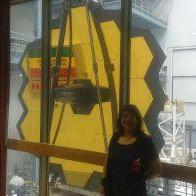
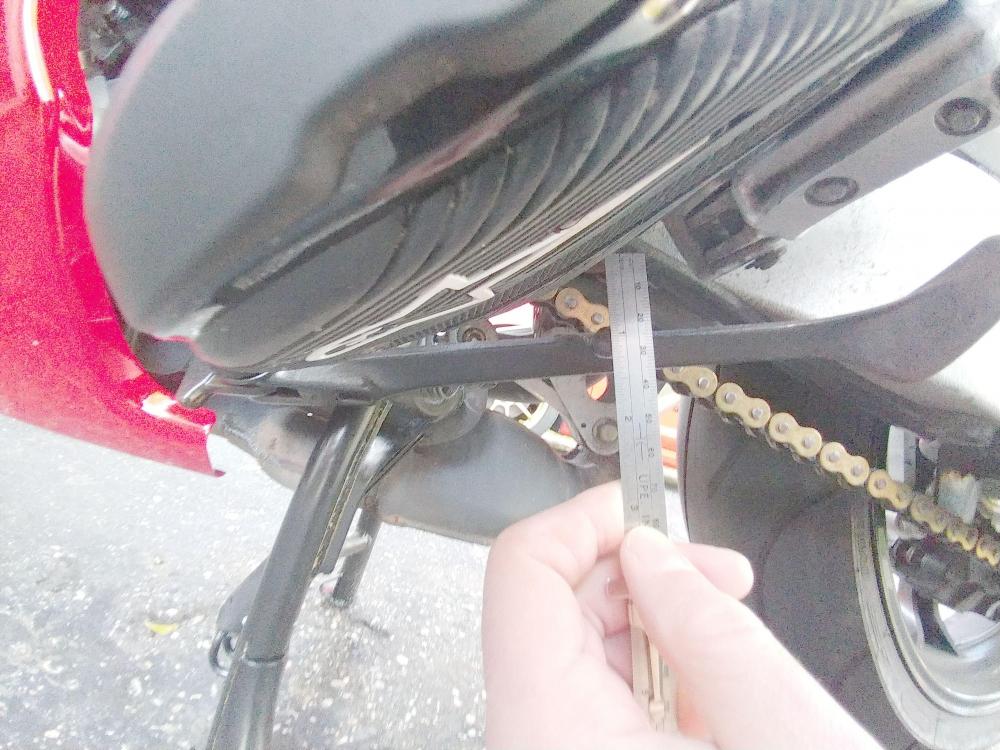
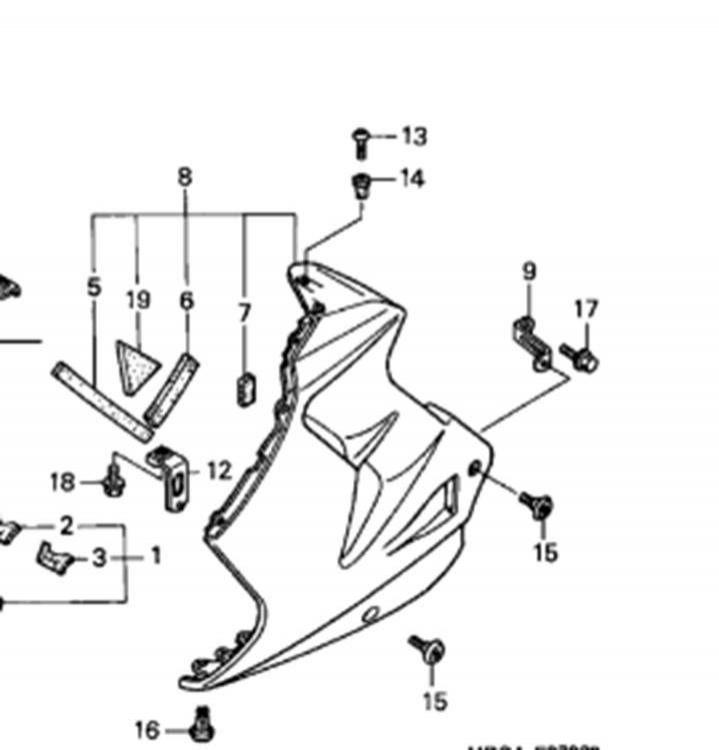

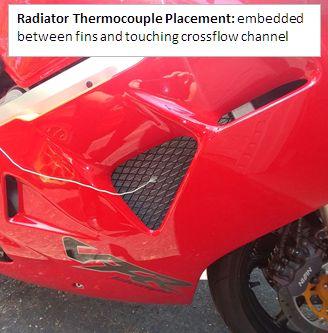
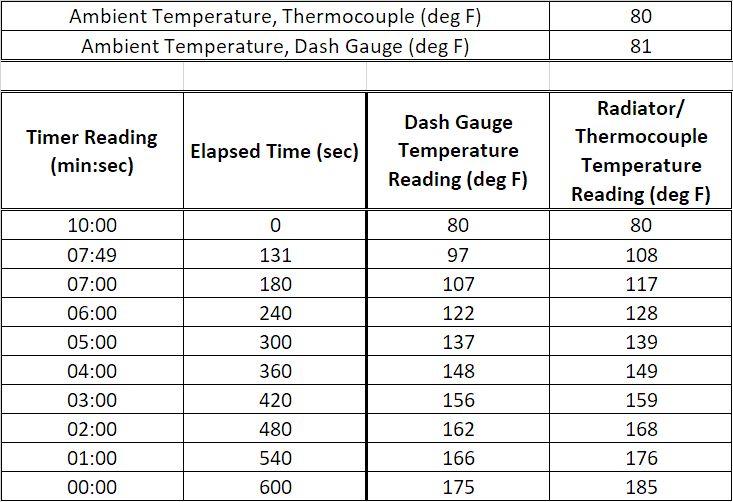

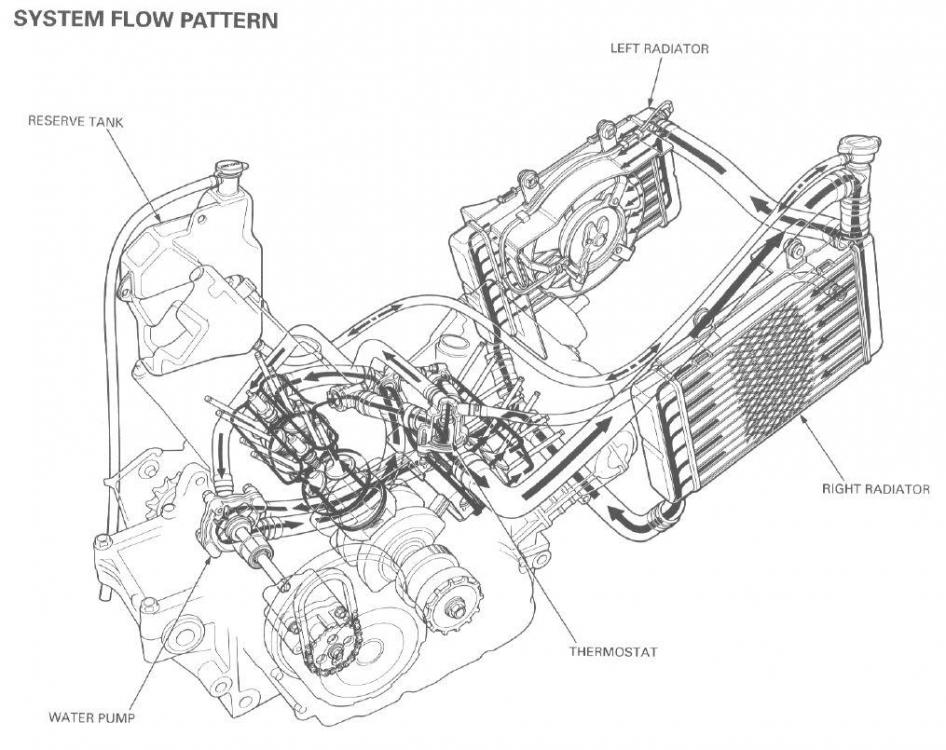
Kickstand clearance with Knight Design lowering pegs on 5th Gen?
in Fifth Generation VFR's
Posted
I bought and installed a pair of the Knight Design pegs. I got the ones MaxSwell shows in the picture above except I choose the silver colored ones. My comments:
1) You notice more vibrations at certain RPMS, but it was not annoying for the 2 or 3 miles I traveled for a quick test.
2) I would say the drop is less than the 1-3/8" KD claims. I didn't have proper measuring equipment at home, but I jerry-rigged something with wooden blocks and index cards. I got about 1-1/8" difference in the center of the pegs. Keep in mind that the rubber on the OEM peg compresses some, so the effective drop will be a little less. Nonetheless, you can feel a noticeable difference between OEM and the KD pegs.
3) Space gets crowded on the shifter side. I tried rotating the shifter down 1 spline, but that was too much. I went back to my original location and it is a hair high, but still better than one spline down. I'll try it as is for a bit and if it doesn't work out, I'll bend the shifter a bit. I ended up bending the tang down on the kickstand to give me the room to move my foot around. This made the kickstand harder to deploy (see 4 below).
4) With the tang bent, it's harder to deploy the kickstand. I'm using size 45 Alpinestars SMX-6 V2 Drystar boots and they are pretty bulky. When I stick my heel in between the shifter and foot peg to deploy the kickstand, my heel rubs against both the foot peg and the shift lever. If I do what MaxSwell says and look down, it's not issue, but if I don't, I sometimes accidentally shift the transmission from N to 1st. If you have narrow boots or a smaller foot, this might not be an issue, but if you are using boots with any sort of spine or lateral support hinge or one with wide soles or a large heal cup, this will be something to watch out for. I suspect it would be less of an issue with some of the narrower boots that I have.
5) I took out the locknut on the brake adjustment to lower the pedal as much as possible. The issue is that the threads on the adjustment stud hit the lever before the hex bottoms. I backed off half a turn, but the pedal wasn't low enough. I then cut three threads off with a Dremmel and was then able to bottom the face of the hex, but it still wasn’t enough. It is tolerable, but not ideal. I'm going to try it like this, but I'm pretty sure I will end up bending the lever as JoelF did above.